Document Centre Hinzert
The landscape around the village of Hinzert is the idyllic German countryside characterised by smooth hills and farm fields. No original traces refer to its use between 1939 and 1945 when the site was a Special Camp for political prisoners from more than 20 countries.
The competition-winning project questions the political and territorial deformations of the landscape. By seamlessly blending intuition and rational development strategies, this unconventional project continues the architects specific interest in the relation between material strategies and their conceptual potential.
The 43-metre-long structure occupies a gentle slope, rising from two to seven metres in height. The structure, roof and facade are unified into a single volume composed of over three thousand different triangular plates of 12-mm Corten steel welded together in a workshop to form 12 large elements that were then assembled on site. The angles between the individual panels were calculated to ensure that the elements have an adequate structural height and that the entire construction forms a rigid folded plate.
The design was developed from the inside towards the outside. Although the lines of sight give the impression of a single spatial unit, the reddish brown envelope encases an elongated exhibition space, seminar room, library, archive and offices. Around the central exhibition-archive space a series of pockets - containing archive units, large exhibits and small research cells - push the volume outwards into the landscape. Like a shelter that protects historic material and relics, the Document Centre is a rather introverted building, only opening up to the landscape on the valley side. The opening defines the exact position of the building in the landscape and describes a precise viewpoint: a cross-fade from a historical photograph to the contemporary perspective.

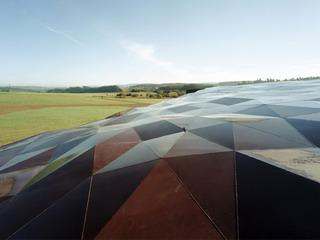

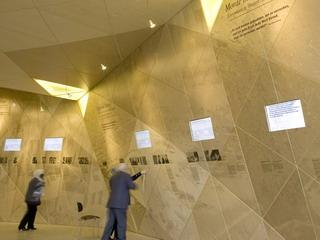
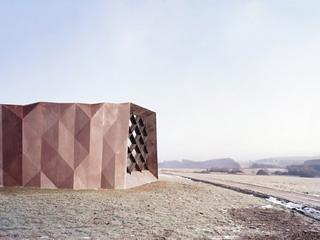
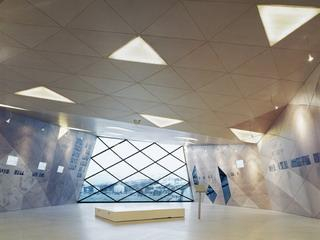
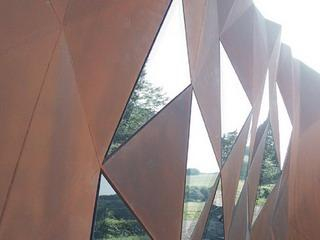
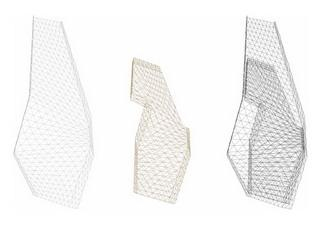
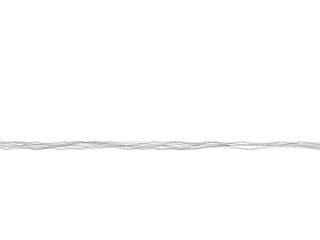
.jpg)
.jpg)